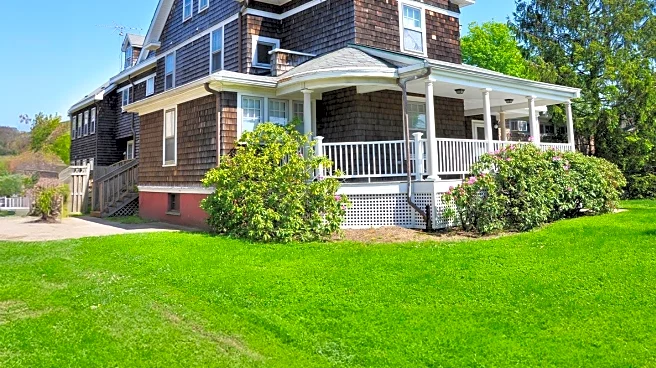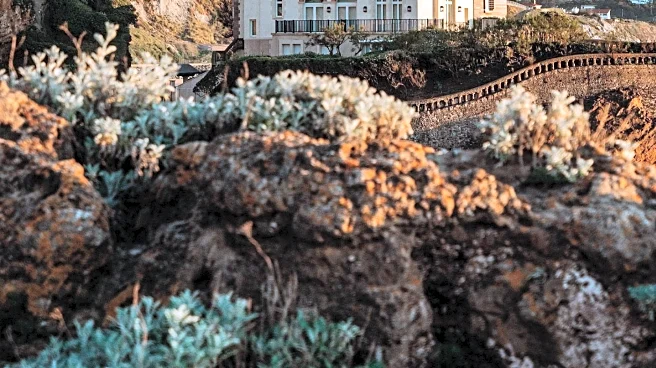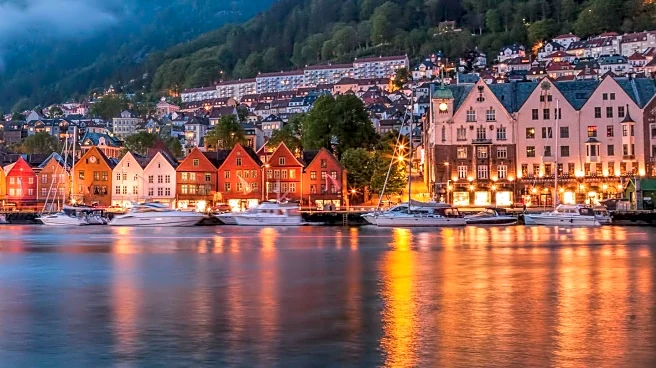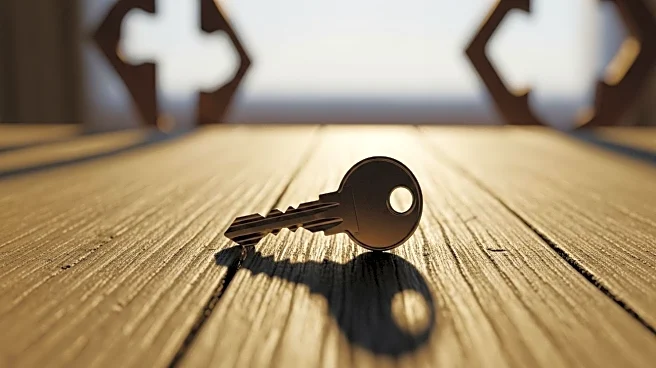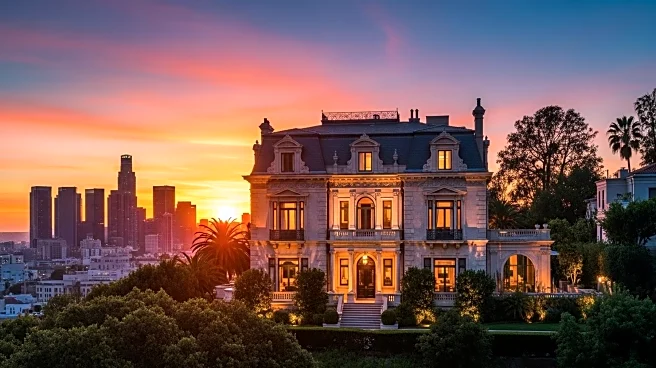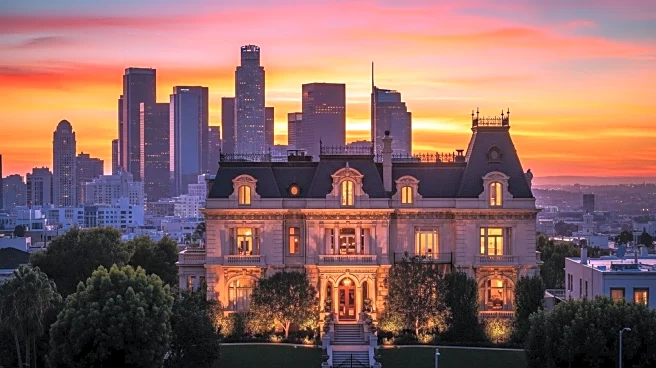What's Happening?
A historic church built in 1876 in Rifton, NY, has been transformed into a modern farmhouse retreat. Known as The Rifton, the 4,596-square-foot stone structure has served various roles, including a local church, town hall, and private farmhouse. Rony Zeidan, founder and chief creative officer of RO New York, purchased the property in 2020 for $569,000 and undertook a careful renovation to preserve its architectural legacy. The property now features 30-foot ceilings, exposed beams, wide-plank wood floors, and rough-hewn stone walls. It includes a spiral staircase, a spacious deck, and a wing that can be used as a home office or yoga studio. The transformation has made The Rifton a popular listing, attracting attention for its unique blend of history and modern design.
Why It's Important?
The transformation of The Rifton highlights a growing trend in real estate where historic properties are repurposed into modern living spaces. This approach not only preserves architectural heritage but also meets contemporary lifestyle demands. Such projects can increase property values and attract buyers interested in unique homes with historical significance. The renovation of The Rifton demonstrates how creative vision can enhance the appeal of historic structures, potentially influencing real estate markets in regions with rich historical backgrounds like the Hudson Valley.
What's Next?
The Rifton's listing with a significant price reduction suggests potential interest from buyers seeking unique properties. As more historic buildings are converted into modern residences, real estate developers and architects may explore similar projects, balancing preservation with innovation. This trend could lead to increased investment in historic areas, boosting local economies and encouraging tourism. Stakeholders in real estate and heritage conservation may collaborate to ensure that such transformations respect historical integrity while providing modern amenities.
Beyond the Headlines
The conversion of historic properties into modern homes raises questions about the ethical considerations of preserving cultural heritage. While such transformations can breathe new life into old structures, they also risk erasing historical narratives. Balancing modern needs with historical preservation requires careful planning and respect for the original architecture. This trend may inspire discussions on the cultural value of historic buildings and the role of architecture in storytelling.

